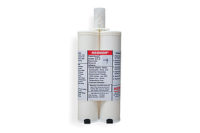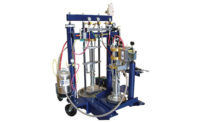Cure-in-Place and Form-in-Place gaskets are some of the latest buzz words for manufacturing. These methods replace preformed solid gaskets and O-rings with liquid gaskets which are better able to adopt the shape of the components and provide a more perfect seal. The liquid material is placed in a bead along the outline of the intended seal and then cured in place on the component. The curing is completed using UV curing lights or through creating anaerobic conditions by assembling the component and locking the liquid gasket material between substrates.
The Cure-in-Place method is extremely effective at reducing the complexity and time required when creating prototypes and custom machines. Rather than designing components to meet the sizes of preformed gaskets in stock or going through the expensive process of designing new gaskets and outsourcing their production, manufacturers are increasingly turning to customizable and adaptable technologies to meet their needs. While UV gaskets are useful when creating a new, one-off pattern, where this method really shines is when it is paired with a programmable gantry cartesian robot.
Fundamentally similar to modern 3D printers, gantry cartesian dispensing and curing robots follow plotted x, y, z coordinates and timing queues to precisely dispense UV curable sealant. Once dispensing is completed, the curing is accomplished moments later by repeating the dispensing motions with a high intensity UV cure light. These machines put manufacturers in charge with options to select from multiple pre-programmed patterns at the touch of a button. This allows manufacturers to efficiently apply sealants to components of different shapes and designs without duplicating the machinery needed to process the component. Additional features such as machine vision inspection, pass/fail technology, part placement, removal and even complete integration into existing manufacturing assembly lines are all available options.
A benchtop gantry dispensing robot offers many more uses than sealing gasket patterns. By flushing the system between each run, multiple materials can be used. Adhesives, sealants and lubricants of all types can be applied with a high degree of accuracy. One series of components may be prepared with UV Cure-in-Place gasket while the next set of components is pre-applied with anaerobic thread lockers and in yet another run, a sensitive electronic motherboard is protected with a shallow potting material. When handled correctly, this single machine can become a manufacturing hub supporting every phase of production.
Remember, it is equally important to select the right material to dispense as to choose the right dispensing and curing machinery. Not just any UV curable sealant will do. There is a gamut of factors to consider including substrate material, chemical exposures and environmental and physical stresses that may affect the sealant in both cured and uncured stages. Therefore, it is important to bring in experts in material sciences and teams experienced in selecting the best adhesives and sealants for specific manufacturing operations.
With so many added value options and feature choices to be made, the first step in determining the best dispensing system and material is always a detailed discussion about the final product and the manufacturing process. To start this conversation or for a quotation on benchtop gantry dispensing and curing machines, contact Hernon Manufacturing, Inc.® at (888) 520-0161 or visit www.hernon.com. Hernon Manufacturing, Inc.® is unique in their industry. They not only manufacture dispensing and curing machines while producing over 5000 different adhesives and sealants, they also build many of the machine components from scratch including valves and high intensity UV cure lights. To top it off, they provide customers direct access to their engineering teams.



